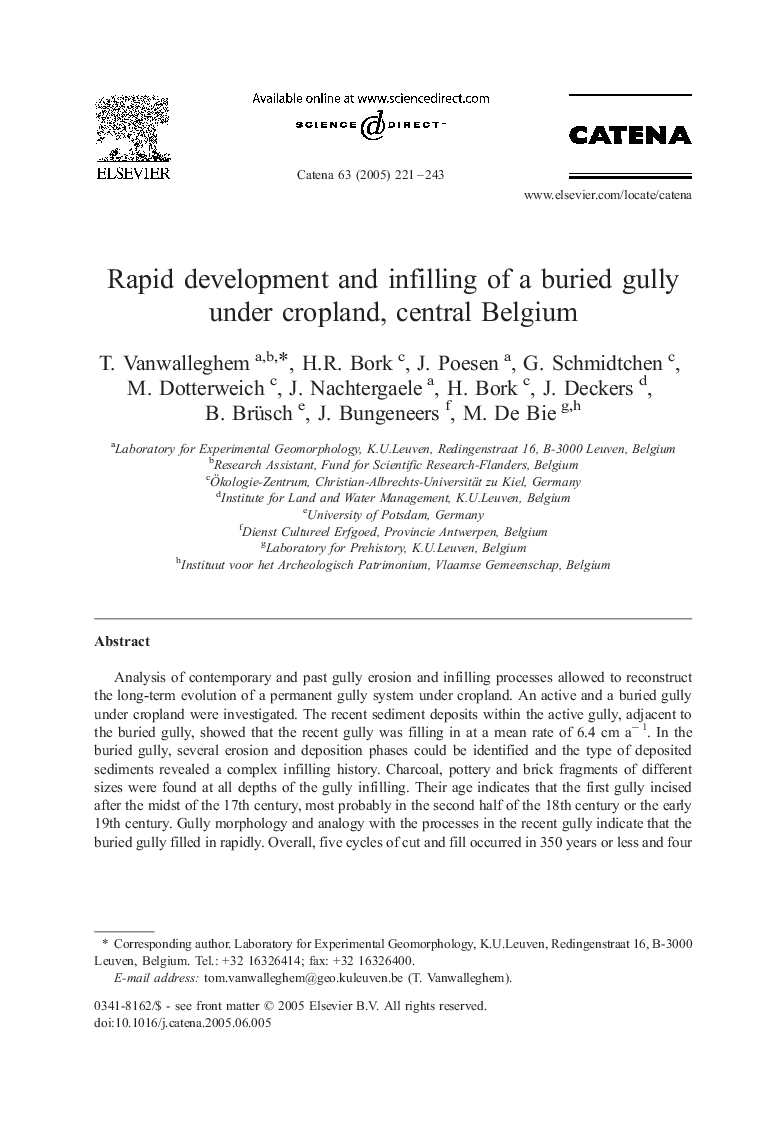| Article ID | Journal | Published Year | Pages | File Type |
|---|---|---|---|---|
| 9489937 | CATENA | 2005 | 23 Pages |
Abstract
Analysis of contemporary and past gully erosion and infilling processes allowed to reconstruct the long-term evolution of a permanent gully system under cropland. An active and a buried gully under cropland were investigated. The recent sediment deposits within the active gully, adjacent to the buried gully, showed that the recent gully was filling in at a mean rate of 6.4 cm aâ 1. In the buried gully, several erosion and deposition phases could be identified and the type of deposited sediments revealed a complex infilling history. Charcoal, pottery and brick fragments of different sizes were found at all depths of the gully infilling. Their age indicates that the first gully incised after the midst of the 17th century, most probably in the second half of the 18th century or the early 19th century. Gully morphology and analogy with the processes in the recent gully indicate that the buried gully filled in rapidly. Overall, five cycles of cut and fill occurred in 350 years or less and four cycles even within little less than a few decades, indicating that gully development and infilling under cropland can be very rapid processes.
Related Topics
Physical Sciences and Engineering
Earth and Planetary Sciences
Earth-Surface Processes
Authors
T. Vanwalleghem, H.R. Bork, J. Poesen, G. Schmidtchen, M. Dotterweich, J. Nachtergaele, H. Bork, J. Deckers, B. Brüsch, J. Bungeneers, M. De Bie,
